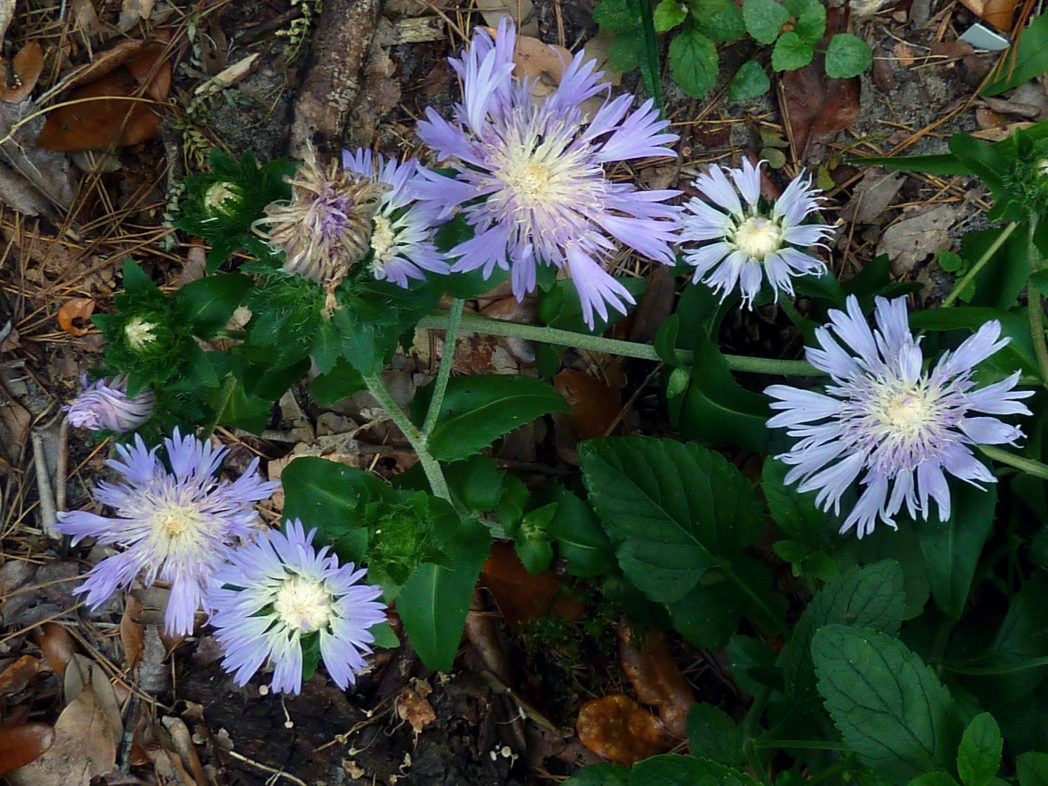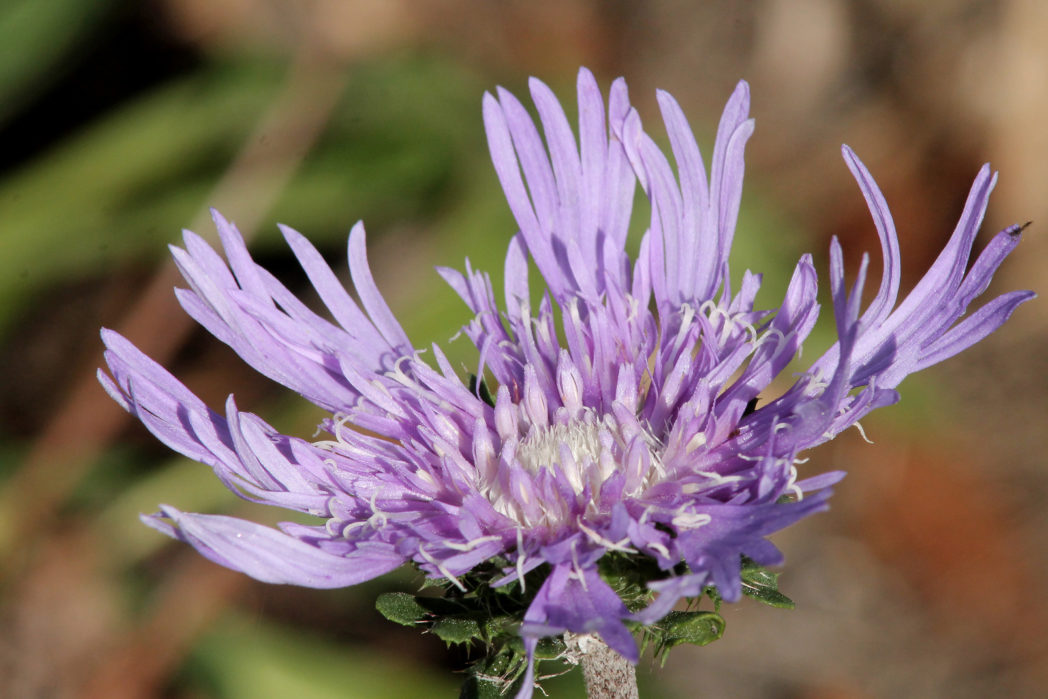Stokes’ aster
Pictured above: Stokes’ aster (Stokesia laevis) by Mary Keim. Click on terms for botanical definitions. View as a PDF.
Stokes’ aster is an herbaceous perennial wildflower native to only nine counties in Florida (but more common throughout the Southeast). It occurs naturally in savannas, flatwoods, roadside depressions and pitcherplant bog margins. Flowers typically bloom in spring and summer, but may bloom throughout the year, attracting a variety of bees, wasps and butterflies.
Stokes’ aster begins as a basal rosette of long (1’+), straplike leaves, from which one or more stems emerge. Flowers are borne singularly atop each stem. They are large (2–3”+ in diameter), showy and may be bluish-purple, lavender, pinkish or even white. Flowerheads are comprised of many tubular disk florets surrounded by deeply lobed ray florets. Stigmas are whitish and prominent. Leaves are toothed near the base, with glandular and pubescent surfaces. They are alternately arranged. Fruits are tiny achenes.

Stokesia laevis is the only species in the Stokesia genus, making it a monotypic taxon. The genus and common name refer to the English botanist Jonathan Stokes (1755–1831).
Family: Asteraceae (Aster, composite or daisy family)
Native range: Panhandle, Nassau and Flagler counties
To see where natural populations of Stokes’ aster have been vouchered, visit florida.plantatlas.usf.edu.
Hardiness: Zones 8A–10A
Soil: Moist, well-drained, acidic to neutral soils
Exposure: Full sun to partial shade
Growth habit: 1–2’ tall and wide
Propagation: Division, seed
Garden tips: Stokes’ aster works well in mixed wildflower and butterfly gardens. It can spread and may require occasional thinning. Remove spent flowerheads to encourage a longer flowering period.
Stokes’ aster plants are occasionally available from nurseries that specialize in Florida native plants. Visit www.PlantRealFlorida.org to find a nursery in your area.

